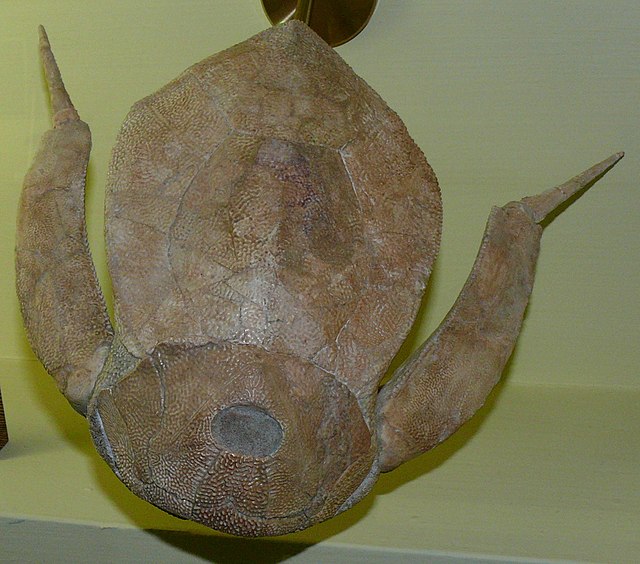Antiarchi is an order of heavily armored placoderms. The antiarchs form the second-most successful group of placoderms after the arthrodires in terms of numbers of species and range of environments. The order's name was coined by Edward Drinker Cope, who, when examining some fossils that he thought were armored tunicates related to Chelyosoma, mistakenly thought that the orbital fenestra was the opening for the mouth, or oral siphon, and that the opening for the anal siphon was on the other side of the body, as opposed to having both oral and anal siphons together at one end.
Antiarchi
Chuchinolepis, Vanchienolepis and Yunnanolepis
Placoderms are members of the class Placodermi, a group of prehistoric fish known from Paleozoic fossils which lived from the Silurian to the end of the Devonian period. While their endoskeletons are mainly cartilaginous, their head and thorax were covered by articulated armoured plates, and the rest of the body was scaled or naked depending on the species. Placoderms were among the first jawed fish; their jaws likely evolved from the first pair of gill arches.
Placoderm
Dunkleosteus, among the first of the vertebrate apex predators, was a giant armoured placoderm predator.
Amazichthys, a pelagic arthrodire from the Middle Famennian of the Late Devonian.
Fin spine of Eczematolepis, from the Middle Devonian of Wisconsin.






